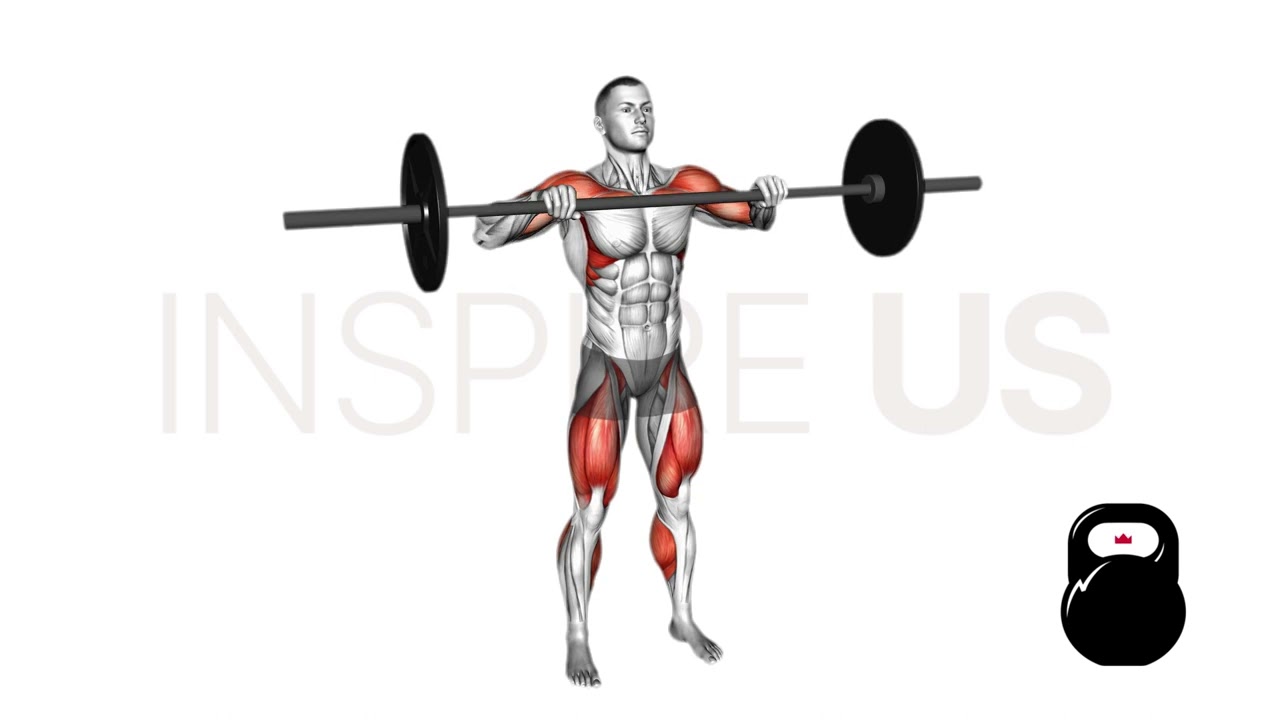Hang Clean: Benefits, Muscles Worked, and More
A major component of any Olympic weightlifter’s training; the hang clean is an exercise that is not only useful for professional weightlifters, but also the average exerciser seeking better strength and power throughout their entire body.
However, due to the intensity and complexity of the hang clean, it is vitally important for lifters of all experience levels to understand its core characteristics - both to take advantage of the hang clean, as well as to ensure it is performed safely.
The hang clean is a highly explosive barbell exercise that requires a close understanding of weightlifting mechanics and significant strength in all parts of the body. If performed correctly, it is known for building unparalleled levels of power, speed and muscular strength in a lifter.
What is the Hang Clean?
In a more technical sense, the hang clean is a multi-joint compound exercise of significant intensity.
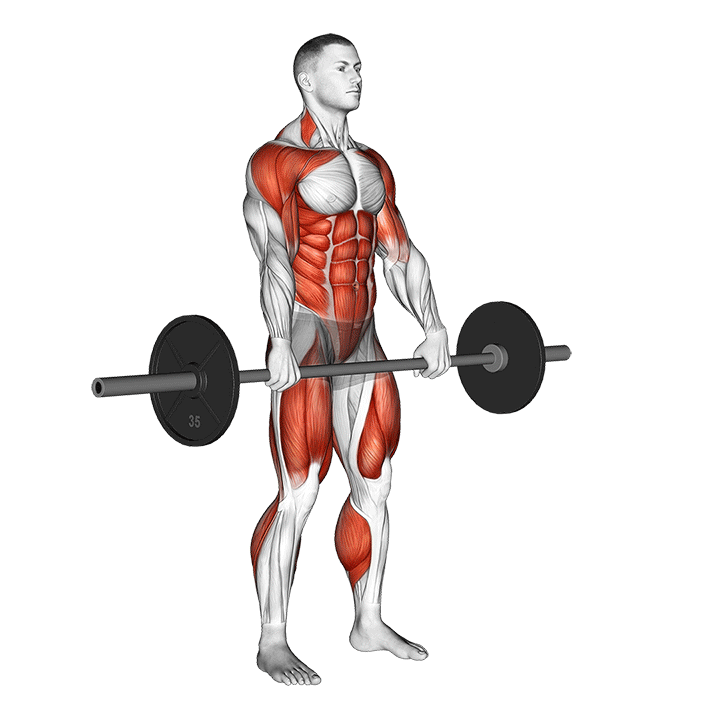
It is often included into olympic weightlifting and athletic training programs because of its capacity to build whole-body power and explosiveness - as well as the fact that it is often used as a progression to the power clean or clean and jerk exercises.
What Equipment Does the Hang Clean Use?
The hang clean will only require a set of weight plates and a straight barbell, though lifters wishing for the utmost in safety may also invest in barbell collars and Olympic bumper plates so as to minimize damage to the ground and risk of injury.
Who Should Perform the Hang Clean?
The hang clean is most effective for intermediate level lifters wishing to develop their rate of force output, or for novice Olympic weightlifting athletes that have yet to master their competition clean exercise variations.
How to do a Hang Clean
To perform a hang clean, the lifter will stand upright with a loaded barbell placed on the floor in front of them.
To enter the initial stance, they will deadlift the bar to approximately pelvis-elevation, allowing it to “hang” with their arms before transitioning to the start of the repetition.
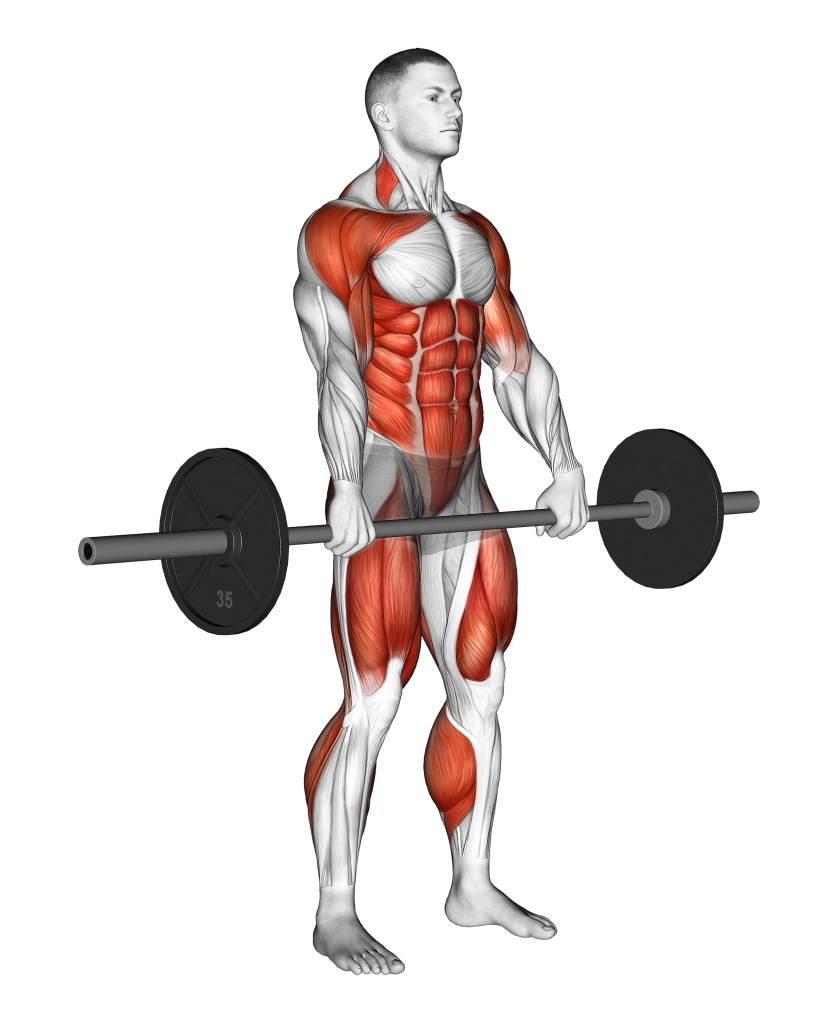
This hanging-barbell position will be the starting point of all subsequent repetitions, and further repetitions will not require the lifter to deadlift the bar from the floor once again.
To begin a repetition, they will then clean the bar upwards by performing a shrug and thrusting the barbell upwards simultaneously, maintaining a loose grip over the bar as they do so.
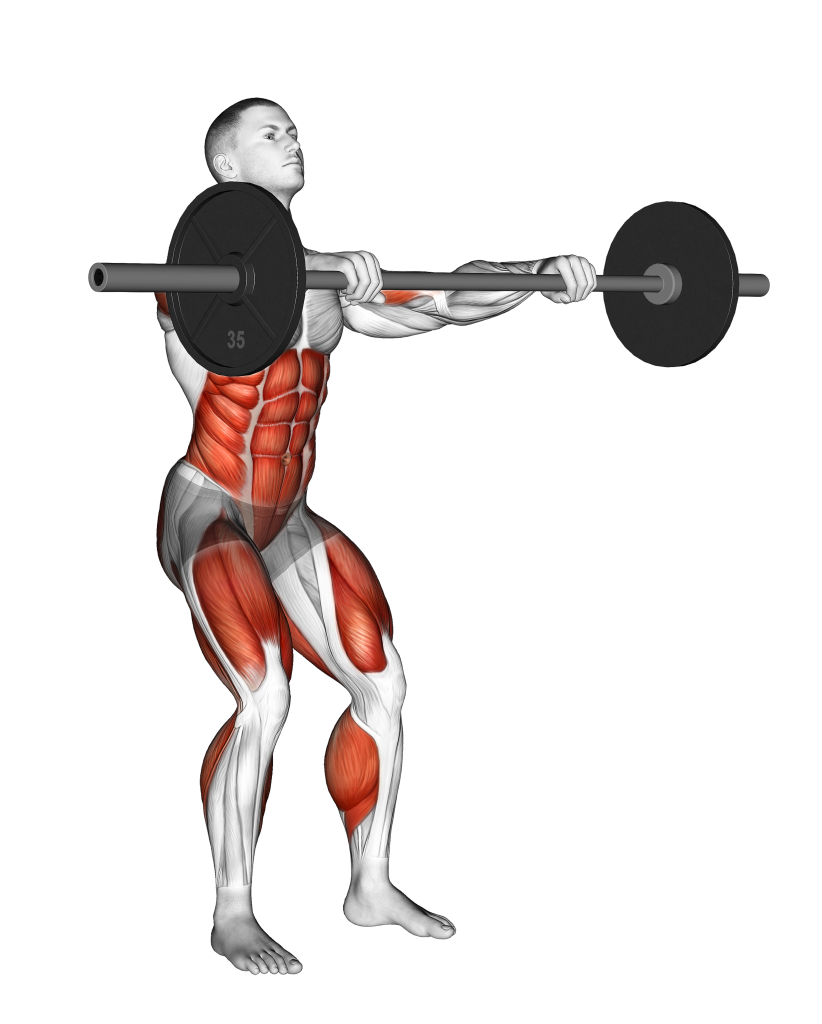
As the barbell is thrown upwards, they will squat beneath it, allowing their grip to rotate and moving the elbows forward so as to maintain a more advantageous pressing position.
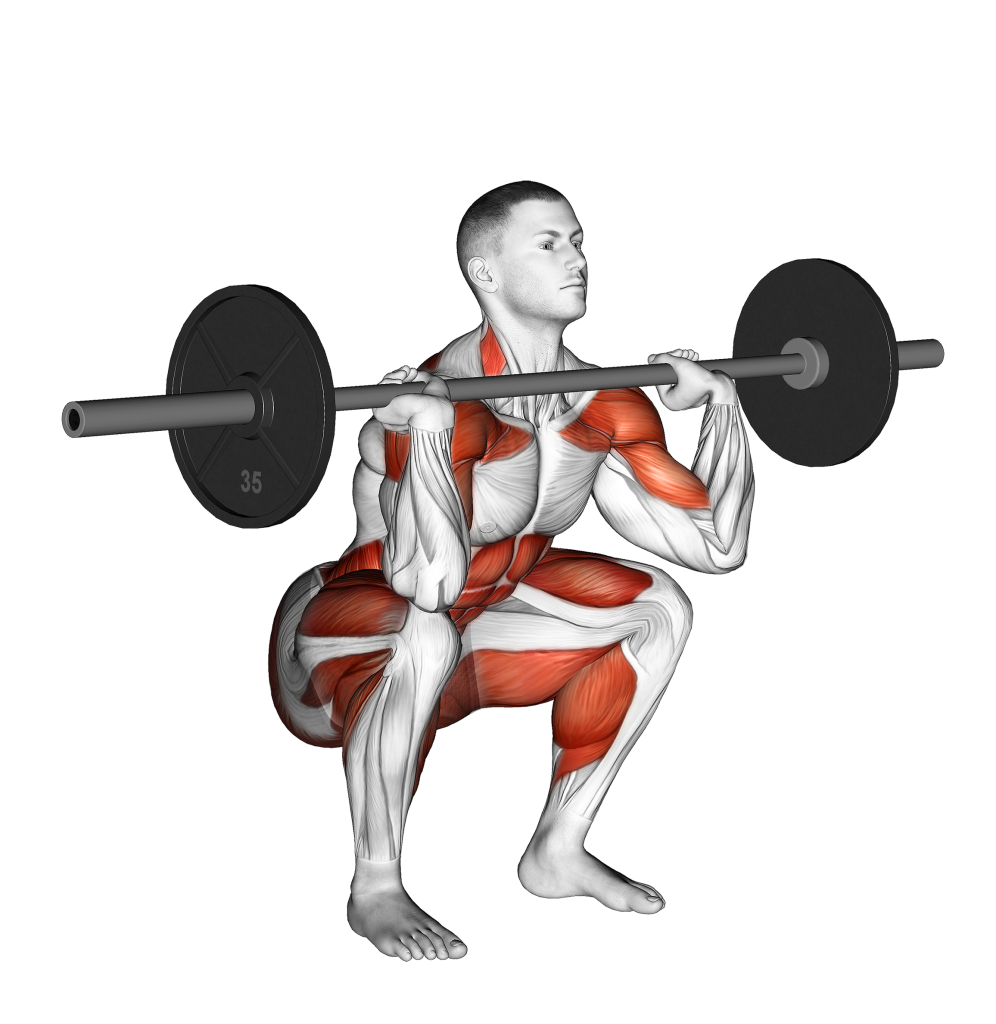
Once the barbell is racked near the clavicles or chest shelf, they will perform a front squat by bending at the hips and knees simultaneously.
To complete the repetition, they will reverse this front squat motion, returning to a standing position with the barbell still atop their chest shelf.
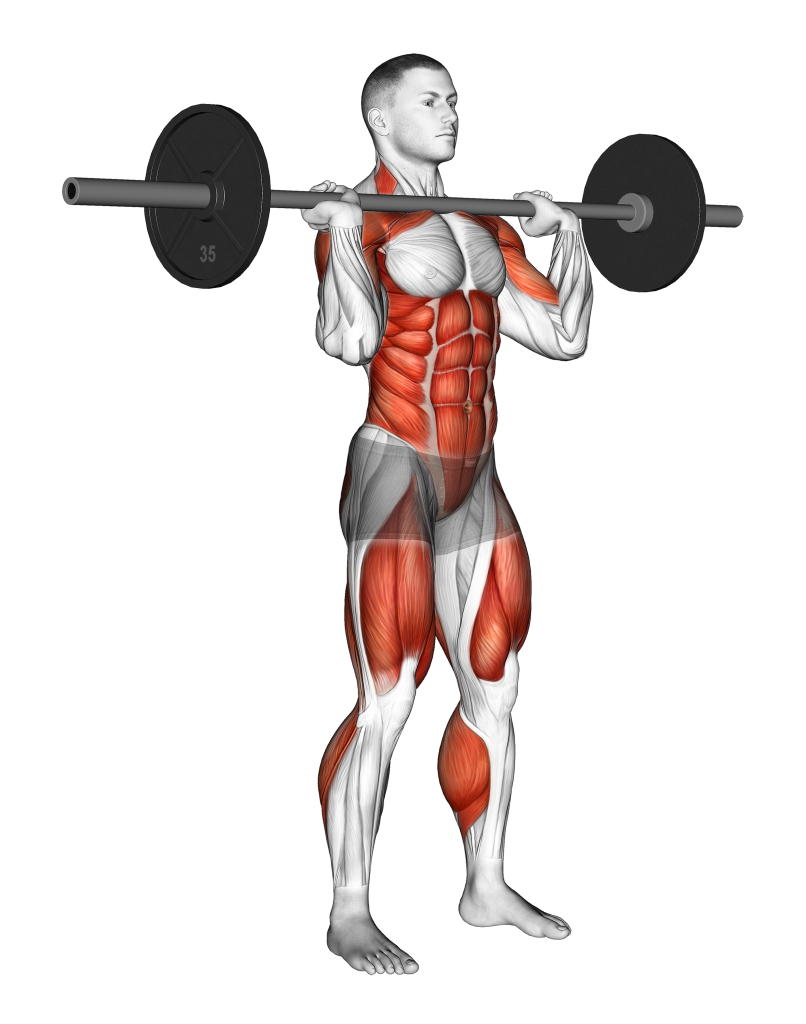
Ideally, each step of this exercise is performed seamlessly and as fast as possible, meaning that there are no clearly defined moments of inaction throughout each repetition.
What Muscles are Worked by the Hang Clean?
As a wide-reaching compound exercise, the hang clean is capable of recruiting a number of different muscle groups - though not all to the same extent, with some muscle groups providing far more force and dynamic contraction than others.
It is the former group that is referred to as “primary” mover muscles, and are the muscles that receive the greatest benefit from proper hang clean execution, whereas other muscle groups that are not taxed to the same level are known as “secondary” or “stabilizing” muscle groups, depending on their function within the exercise.
Primary Mover Muscles
The primary muscles recruited during a hang clean repetition are the three heads of the deltoid muscles, the latissimus dorsi, the trapezius and other back muscles, the posterior chain with an especial focus on the glutes, and the rest of the legs in their entirety.
Secondary and Stabilizer Mover Muscles
Other muscle groups that are recruited to a lesser degree or otherwise utilized in a stabilizing capacity are the core musculature, the muscles of the arms and the erector spinae - all of which help control the barbell and reduce the risk of resistance by supporting the primary mover muscles.
What are the Benefits of Hang Cleans?
Apart from the usual muscular hypertrophy and neuromuscular strength adaptations that come with nearly every form of resistance exercise, the hang clean is also capable of providing several other benefits that are uniquely attributed to the exercise alone - making it invaluable for lifters whose goals require the following effects.
Improved Power, Speed, and Explosiveness
The main benefit derived from hang cleans (and similar movements) is that of improved rate of force development, especially in terms of whole-body rate of force development.
In less technical terms, this means that the body will be capable of outputting more force in a more rapid time frame, or what is otherwise known as explosiveness.
This sort of muscular contraction is utilized more in real-world scenarios, such as in competitive athletics or laborious vocations that do not replicate the sort of exercise seen in a gym.
Athletic Ability Improvement
Because of the hang clean’s capacity to build power, explosiveness and pure muscular strength throughout the entirety of the body - it is particularly useful for athletes of all types.
The sort of training stimulus that may be achieved through the hang clean will allow an athlete to run faster, jump higher, and generally develop their physical abilities in a way that more slow and controlled resistance training cannot achieve.
In particular though, Olympic weightlifters will see the most benefit from regular hang clean performance, as it is mechanically identical to several competition lifts involved in Olympic weightlifting events.
Carryover to Other Clean Variations
The hang clean is a fundamental variation of the standard clean exercise, and as such will feature significant carryover to other exercises that also feature a clean-like movement pattern in their execution.
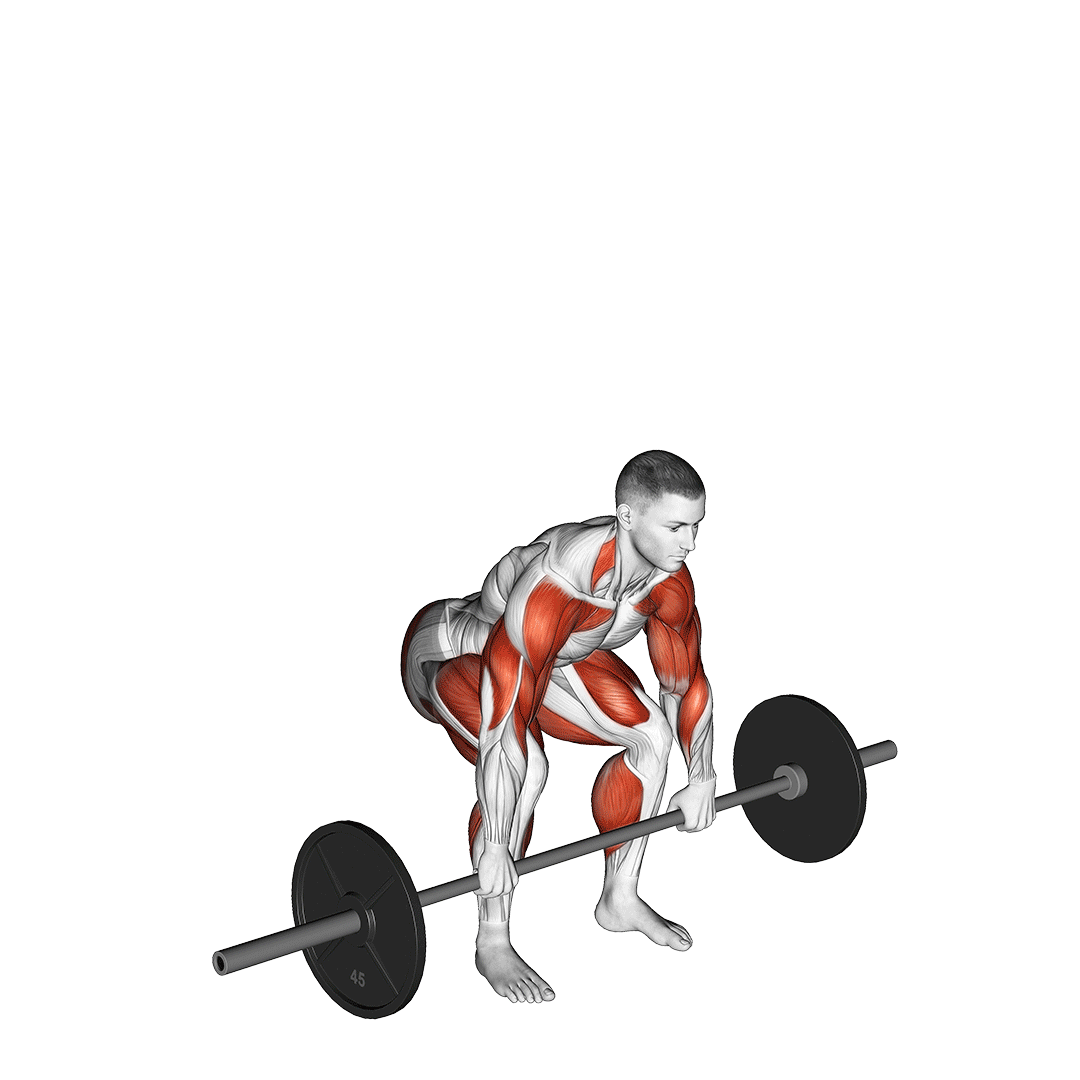
This means that exercises like the clean and jerk, clean and press and a number of other similar exercises can all be made easier by performing the hang clean - not to mention the fact that their mechanical similarity allows the lifter to practice the relevant form cues in a more focused way.
For Olympic weightlifters, this is an essential effect, and a major part of novice Olympic weightlifting training, as understanding the fundamentals of the clean and jerk is what will allow them to compete in the first place.
Whole-Body Training Stimulus
The hang clean will work (to a certain extent) nearly every muscle group found throughout the body.
While this is not unique to the hang clean alone, it is nonetheless an excellent benefit that aids in conditioning of not only the skeletal musculature, but also the cardiovascular and nervous systems that support them.
Furthermore, it allows the hang clean to act as a more athletically-focused rival to the deadlift, which features a similar sort of whole-body muscular recruitment.
If you find that you have grown bored of the traditional deadlift or if it simply is not providing the sort of explosiveness training desired, then substituting with the hang clean is a good bet.
Neuromuscular Work Adaptations
Any experienced weightlifter will tell you that it is not just the muscles of the body that are taxed by hard workouts - so too does the central nervous system become fatigued, especially with regular performance of wide-reaching compound exercises like the deadlift or hang clean.
While any sort of overtraining is bad, regularly pushing the central nervous system or “CNS” to its fullest extent with hang cleans can help condition it to such workloads - allowing for better performance in the future.
A well-conditioned CNS can allow for faster recovery, greater muscular control and even better strength output as a result.
Common Mistakes of Hang Cleans
There is no doubt that the hang clean is a highly technical exercise that can be difficult to master - and as such it is all the more important to avoid the following most common mistakes, as they are also the most likely to result in poor training stimulus or even injuries.
Bar Too Far Forward
Either by deadlifting the barbell from too far away or failing to position the torso beneath the bar during the front squat portion - allowing the barbell to drift away from the body at any point during the hang clean can lead to a lever effect occurring, reducing the lifter’s capacity to maintain control over the bar.
This will not only lead to a breakdown in form adherence, but also poorer benefits from the exercise as less weight and volume is possible for the same level of intensity.
Inefficient Grip Width
Like many other exercises, placing the hands too far or too close together along the barbell will decrease control over the weight and likely contract the wrong muscle groups during the exercise.
For the hang clean, usually the best hand-distance is slightly wider than shoulder-width apart, as this will allow the lifter to keep their grip firmly on the bar while still allowing the elbows to point forward during the latter half of the exercise.
Using the Arms Excessively
Throughout the hang clean, the arms and hands should remain relatively straight and avoid any sort of prolonged dynamic contraction, especially when the barbell is being thrusted upwards.
During the deadlift portion of the exercise - or even during the front squat “landing” - utilizing the muscles of the arms can quickly lead to fatigue and injury, as the force and weight of the barbell can easily overwhelm the smaller muscles located therein.
The muscles of the arms are meant to act in a stabilizing capacity throughout each repetition of the hang clean, securing the barbell and ensuring it remains in a relatively straight path as it moves.
Hang Clean vs Power Cleans and Other Clean Exercises
For the most part, all variations of the clean (i.e. the hang clean, power clean or even the clean and jerk) will involve rapidly moving a barbell up to approximately chest-height as a part of the exercise’s mechanics.
However, the main difference between the hang clean and other clean variations is the starting point of the exercise, where the hang clean will begin with the barbell “hanging” around the pelvis of the lifter, whereas other clean exercise variations may even begin with the lifter deadlifting the bar from the floor with each repetition.
Frequently Asked Questions (FAQ)
What are Hang Cleans Good for?
Hang cleans are excellent for building the muscles of the shoulders, back and lower body in a manner that leads to greater power and explosiveness - making it excellent for athletes and lifters wishing to work on their functional fitness.
They are especially vital for Olympic weightlifters, as hang cleans are mechanically similar to many of their competition lifts and as such provide important practice in both a technical and physical sense.
Why is the Hang Clean so Hard?
The hang clean is a difficult exercise for several reasons - but the most important of which is that it recruits nearly every muscle group throughout the body, requiring not only a great deal of energy but also significant central nervous system control.
This is only doubled by the highly technical nature of the exercise, which requires several taxing factors to follow safely, such as proprioception, coordination, muscle memory and non-muscular flexibility.
Are Hang Cleans Better Than Deadlifts?
In certain respects - yes, hang cleans are better than deadlifts.
While the deadlift is meant to be performed in a slow and controlled manner so as to build raw muscular strength and size, the hang clean’s mechanics allow for better power and explosiveness to be achieved.
As such, it is up to the lifter and their goals to decide which exercise is more appropriate to perform.
In Conclusion
As technical as the hang clean can be, don’t let it discourage you from incorporating this highly effective movement into your workouts.
With proper practice and a light starting weight, there is no doubt that you can build an excellent and highly-functional body using the hang clean and a few other compatible exercises.
As always, remember to follow proper training programming and exercise form, and that it is important to stop working out if you are experiencing any symptoms related to injury.
References
1. Ronai P, Scibek H, The hang power clean. ACSM Health & Fitness Journal. 2016;20(5):50-55. doi:10.1249/FIT.0000000000000240
2. Ebel, Kevin MEd, CSCS; Rizor, Ryan. Teaching the Hang Clean and Overcoming Common Obstacles. Strength and Conditioning Journal 24(3):p 32-36, June 2002.

